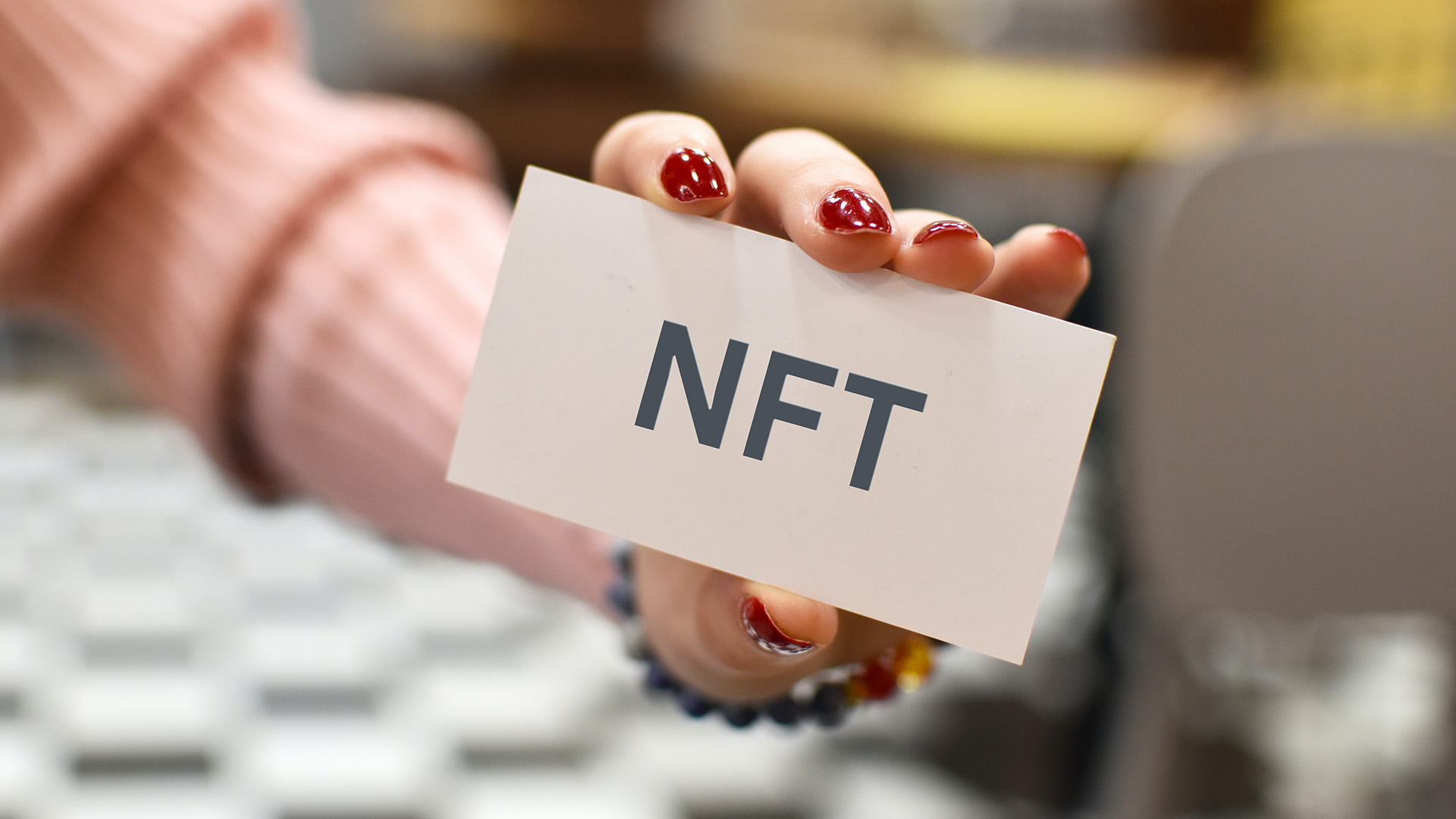Let’s take a journey back to the ‘90s for a minute: Britney Spears on your sticker-covered CD player, Dunkaroos in hand as you dangle a stretched out cord on the landline chatting with a friend— your favorite Beanie Baby perched proudly on the shelf. Pretty vivid, right? Except now that Peanut the Elephant, the Beanie Baby collecting dust in your basement, is suddenly worth anywhere from $10-$2,500.

Why were we so obsessed with buying Beanie Babies? What was the actual value behind owning a stuffed animal that prompts someone to spend thousands of dollars on it today? Both the physical ownership of the limited edition Peanut and the ability to converse with like-minded Beanie Baby-crazed friends provided a sense of exclusivity and community… Ringing any bells?
That beloved Beanie elephant, which only had 2,000 produced, is not so different from the non-fungible token (NFT), CryptoKitty. Each type of cat in the CryptoKitty verse has a specific quantity produced or minted: for example, the Gen 0 Kitties have a max of 50,000 in its series. The limited quantities drive up the value of each NFT, as there will never be more than 50,000 Gen 0 “spots” in the CryptoKitty community.
It’s easy to dismiss NFTs as simply “buyable JPEGs”, but this significantly underestimates their true value. NFTs are carefully created and loaded with value that attracts buyers, who are drawn to perks such as Super Bowl memorabilia, lifelong Coachella passes, and elite food tours in New York City. Indeed, NFT keepsakes from the National Football League which were released throughout the season sold out within a day of posting, representing how virtual and physical experiences are becoming more intertwined.
But how did we get here?
Ever-Evolving Digital Communities
COVID-19 lockdowns fast-tracked the transition from in-person experiences to virtual ones—both inside and outside the workplace. Even before the pandemic, people across the globe had an opportunity to find like-minded people in Facebook groups and Reddit communities, among others. Social media provided the impetus for making our fragmented world more connected. Brands quickly took note. Now, similar to having their own Instagram accounts, they’ve moved on to NFT partnerships and production. That’s because the ownership of NFTs themselves are driven by the desire for community, and individuals investing in the community early on expect some form of reward for getting in on the ground level.
Before we dive deeper, here are the NFT basics:
- NFTs represent ownership of nearly any real or intangible property in digital form, potentially associated with digital files such as photos, videos and audio. But as mentioned, they can also create access to physical experiences.
- An NFT can only have one owner at a time, which is managed through a unique blockchain ID.
- In layman’s terms, blockchain is a public record of all decentralized transactions, which aren’t owned by anyone or any group. Think of a worldwide locked Excel spreadsheet, where the limit (of rows) does not exist.
So what are some examples of original NFT communities?
The early adapters: CryptoPunks are a perfect example of getting in on the action ahead of the curve. Originally, any Punk could be claimed for free, but the 10,000 minted 24×24 pixel art images were quickly scooped up. Now, in order to have “bragging rights” of being in the know you’ll have to pay a hefty price (at least you’ll be the owner of a cute bio page). The lowest-priced CryptoPunk currently for sale (as of March 9, 2022) is 65.95 Ethereum ($179,070.74 USD).
Now that we’ve covered a classic example of “buyable JPEGs,” meet the Bored Ape Yacht Club. It’s a collection of 10,000 unique Bored Ape NFTs—one-of-a-kind digital collectibles that also provide real human experiences. Aside from a swanky new profile picture, each “Ape purchase” includes access to a community of owners who partake in yacht rides and mansion parties; it’s quite literally a network built around a collection. Some Yacht Club members include Stephen Curry, Eminem, Serena Williams, Gwyneth Paltrow and Jimmy Fallon.
Not ready to join Gwyneth and Serena in a Discord Chat? Even if you haven’t been to Coachella, you’ve likely heard of it. But did you realize that this year, Coachella Collectible NFTs are being sold? These exclusive concert NFTs promise lifetime Coachella passes, art prints, photo books, digital collectibles and unique on-site experiences.
While the above three examples are considered to be the NFTs A-list, there are tons of different types of non-fungible tokens up for sale that cost much less than $179,070.74 USD. On sites such as OpenSea, Rarible and (for basketball fans) TopShot, NFTs can be bought, sold and created by anyone anywhere.
Not buying in yet? NFTs are only one part of the big mysterious blockchain. In 2018, Medium published an article showcasing “50 examples of how blockchains are taking over the world.” Virtually every industry has a part to play, from protecting endangered species by recording their habits, to tracking the imports and exports of the diamond trade, and helping musicians fairly be compensated when their songs are played on major streaming platforms. NFTs and NFT communities are becoming intertwined with all parts of society, and that’s where digital marketing comes in–to act as an intermediary between brands and consumers.
Staying one click ahead
As a digital producer, I not only have to keep my finger on the pulse of new trends, but also know how to activate them in a way that is relevant to our clients from a business standpoint. It’s why we started creating Twitter strategies 15 years ago, and more recently, by helping brands launch their TikTok and Clubhouse accounts. (Do people even use that anymore?)
Regardless of your marketing role or industry focus, we all need to be experts in breaking trends. As the explosive growth of Twitter, TikTok and now NFTs illustrates, a curious, strategic mindset will help us navigate through the cacophony of digital noise.
More specifically, here are three ways that marketers and communicators can assess and take advantage of the NFT opportunity:
1) Conduct test(s) and learn which new platforms and trends have true staying power. Could this new method reach your target audience in a completely different way?
2) Realize it’s not a one-size-fits-all approach: the manner in which a brand like Booking.com can leverage social trends and engage its audience will differ dramatically from a life insurance company’s approach.
3) Be agile and scrappy, recognizing trends beyond digital platforms alone, such as the role of influencers and the possibility of paying brand advocates in Super Bowl tickets or Bitcoin.
Rather than take a definitive stance for or against NFT campaigns, marketing and communication professionals should evaluate opportunities based on their brand’s unique needs and objectives. This thoughtful approach will hopefully limit the risk of brands being called out for poor timing, environmental missteps, and exploring markets they are not ready for – as has happened to some in the past.
On the flip side, consider these 10 brands who have taken a mindful approach and thus, capitalized by getting in on the ground floor of a lucrative trend.
Unlike my Beanie Babies, Pokémon cards (which are most likely somewhere in my parents’ attic) and YikYak conversations, NFTs, NFT communities and the evolution of digital communities aren’t going away anytime soon—if you want to continue tracking the trends or chat more, let’s connect!



